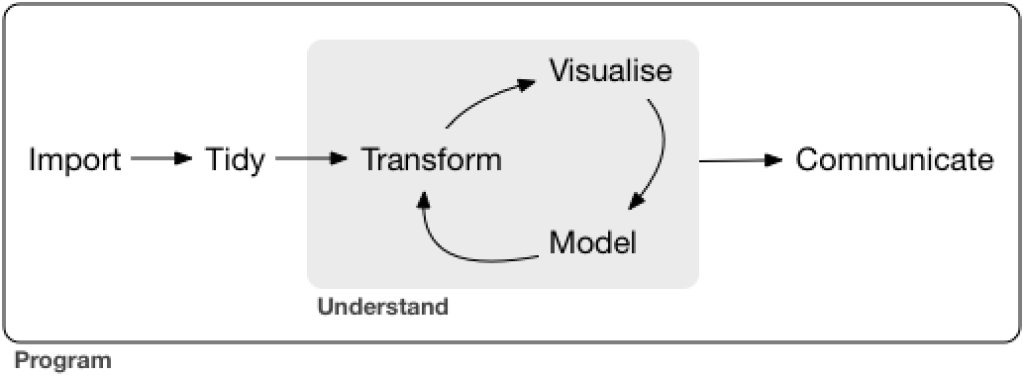Get access to all lessons in this course.
-
Advanced Data Wrangling
- Downloading and Importing Data
- Overview of Tidy Data
- Tidy Data Rule #1: Every Column is a Variable
- Tidy Data Rule #3: Every Cell is a Single Value
- Tidy Data Rule #2: Every Row is an Observation
- Changing Variable Types
- Dealing with Missing Data
- Advanced Summarizing
- Binding Data Frames
- Functions
- Data Merging
- Exporting Data
- Bring It All Together (Advanced Data Wrangling)
-
Advanced Data Visualization
- Best Practices in Data Visualization
- Tidy Data
- Pipe Data into ggplot
- Reorder Plots to Highlight Findings
- Line Charts
- Use Color to Highlight Findings
- Declutter
- Add Descriptive Labels to Your Plots
- Use Titles to Highlight Findings
- Use Annotations to Explain
- Tweak Spacing
- Create a Custom Theme
- Customize Your Fonts
- Try New Plot Types
- Bring it All Together (Advanced Data Visualization)
-
Quarto
- Advanced Markdown
- Advanced YAML and Code Chunk Options
- Tables
- Inline R Code
- Making Your Reports Shine: Word Edition
- Making Your Reports Shine: PDF Edition
- Making Your Reports Shine: HTML Edition
- Presentations
- Dashboards
- Websites
- Publishing Your Work
- Quarto Extensions
- Parameterized Reporting, Part 1
- Parameterized Reporting, Part 2
- Parameterized Reporting, Part 3
- Wrapping up Going Deeper with R
Going Deeper with R
Tidy Data
This lesson is locked
This lesson is called Tidy Data, part of the Going Deeper with R course. This lesson is called Tidy Data, part of the Going Deeper with R course.
If the video is not playing correctly, you can watch it in a new window
Transcript
Click on the transcript to go to that point in the video. Please note that transcripts are auto generated and may contain minor inaccuracies.
Your Turn
Read the Tidy Data vignette
Take a look at your data and see which principles of tidy data it violates
Learn More
In the video, I only talk about two types of data tidying: each variable forming a column and each type of observational unit forming a table. If you want to see examples of the third type (each observation forming a row), check out the tidy data vignette from the tidyr package.
The workflow diagram I talked about is from Chapter 1 of R for Data Science.

One small note unrelated to the main content of this lesson: I recorded it before dplyr 1.0 was released. If you have this version of dplyr installed, you have access to the across() function, which enables you to do summaries across rows. My example of finding it challenging to summarize German speakers data across rows would be much easier using the across() function. However, I still think that in most cases, it is easier to tidy your data and work with it in that format.

You need to be signed-in to comment on this post. Login.
Vuk Sekicki
April 19, 2021
Hello David,
Could you help me out understanding this: names_pattern = "(.)(.+)"
Specifically what is "(.)(.+)"
Thanks.
Matt M
November 9, 2021
I see you re-worded the 3 rules of tidy data from the vignette. Although I think I understand conceptually what is being sought, I'm not sure I follow what each rule means (i.e., what I need to do to make sure that I'm complying with the rule) and what a violation of each rule looks like (the third rule in particular)